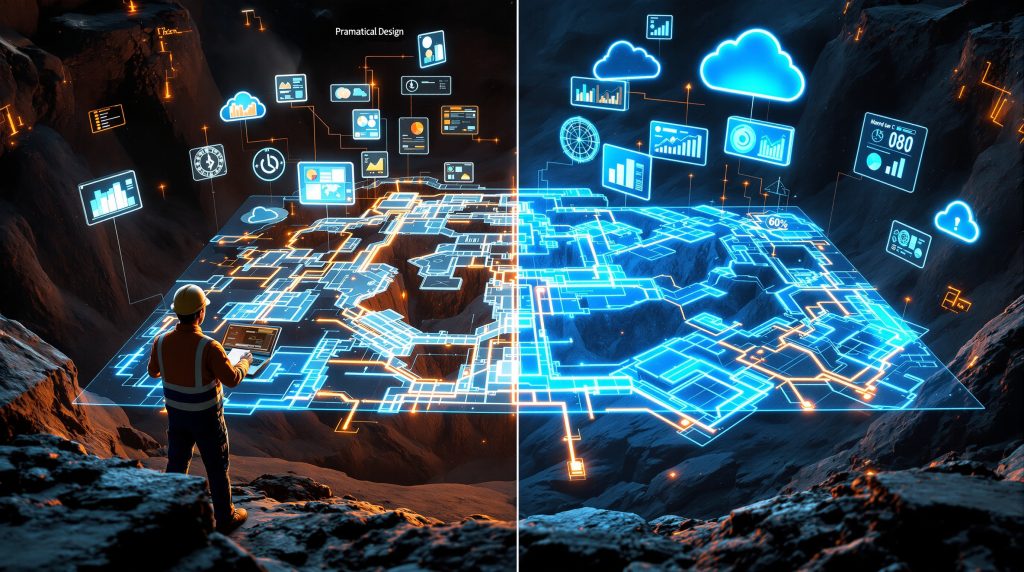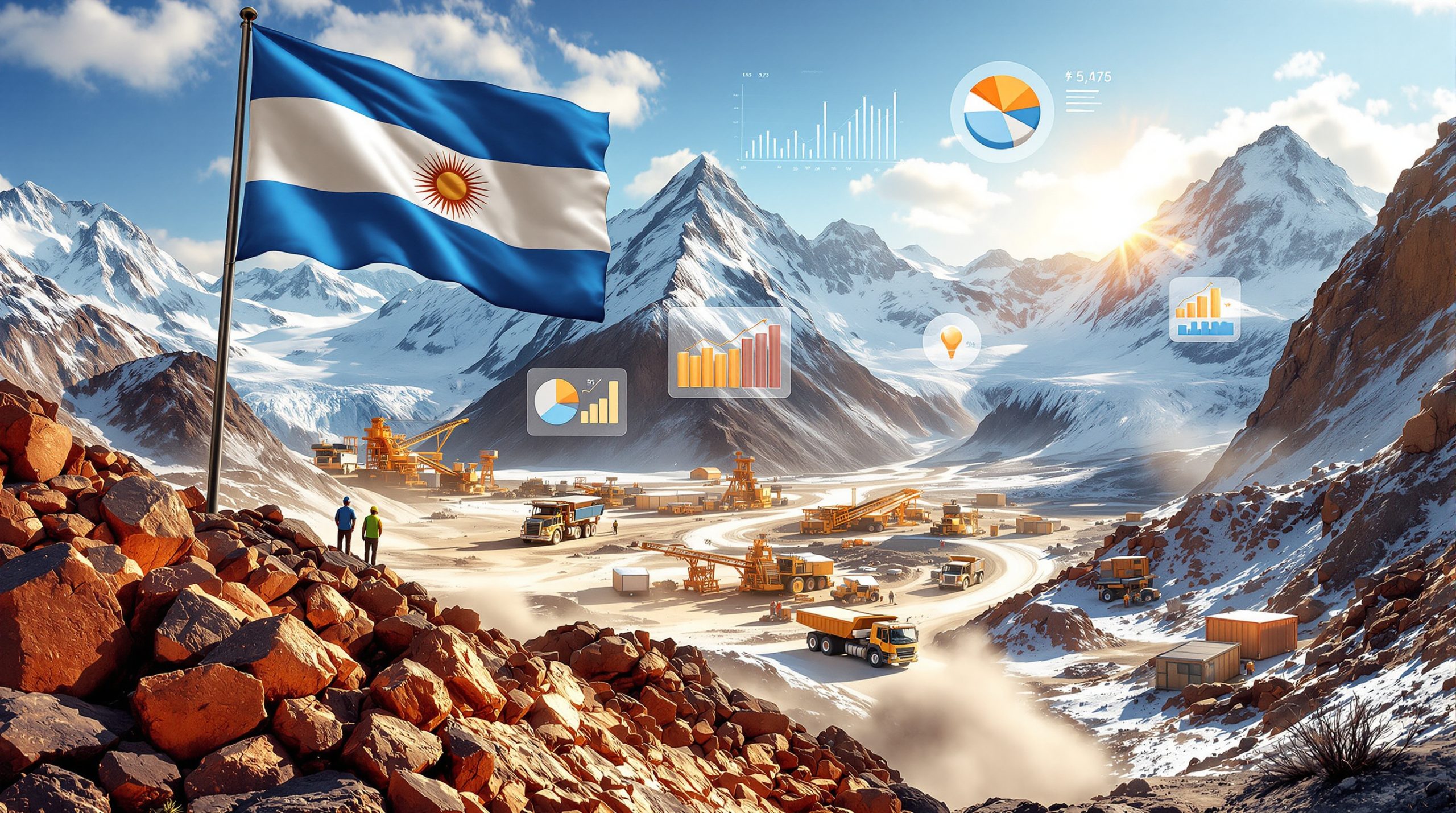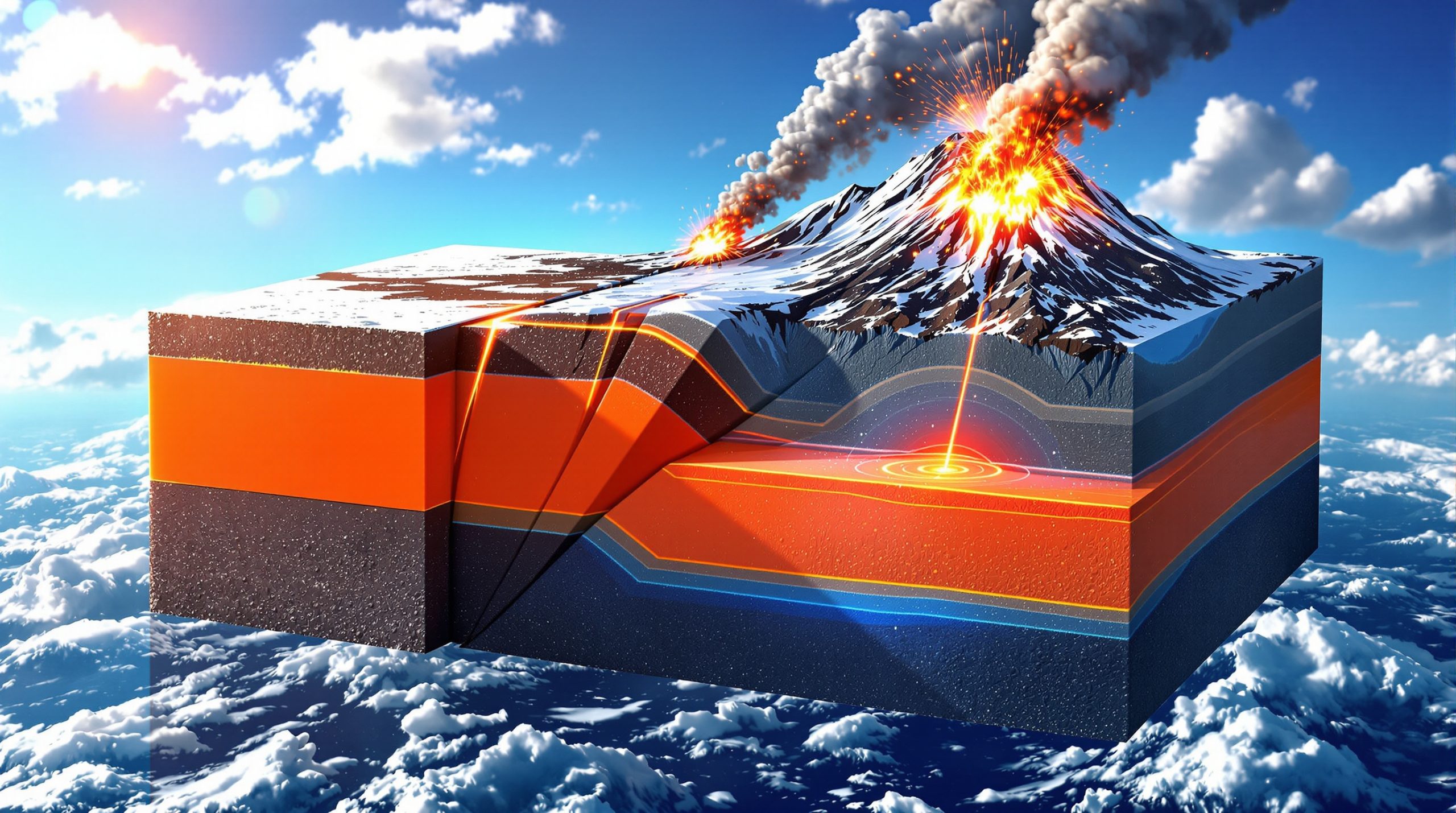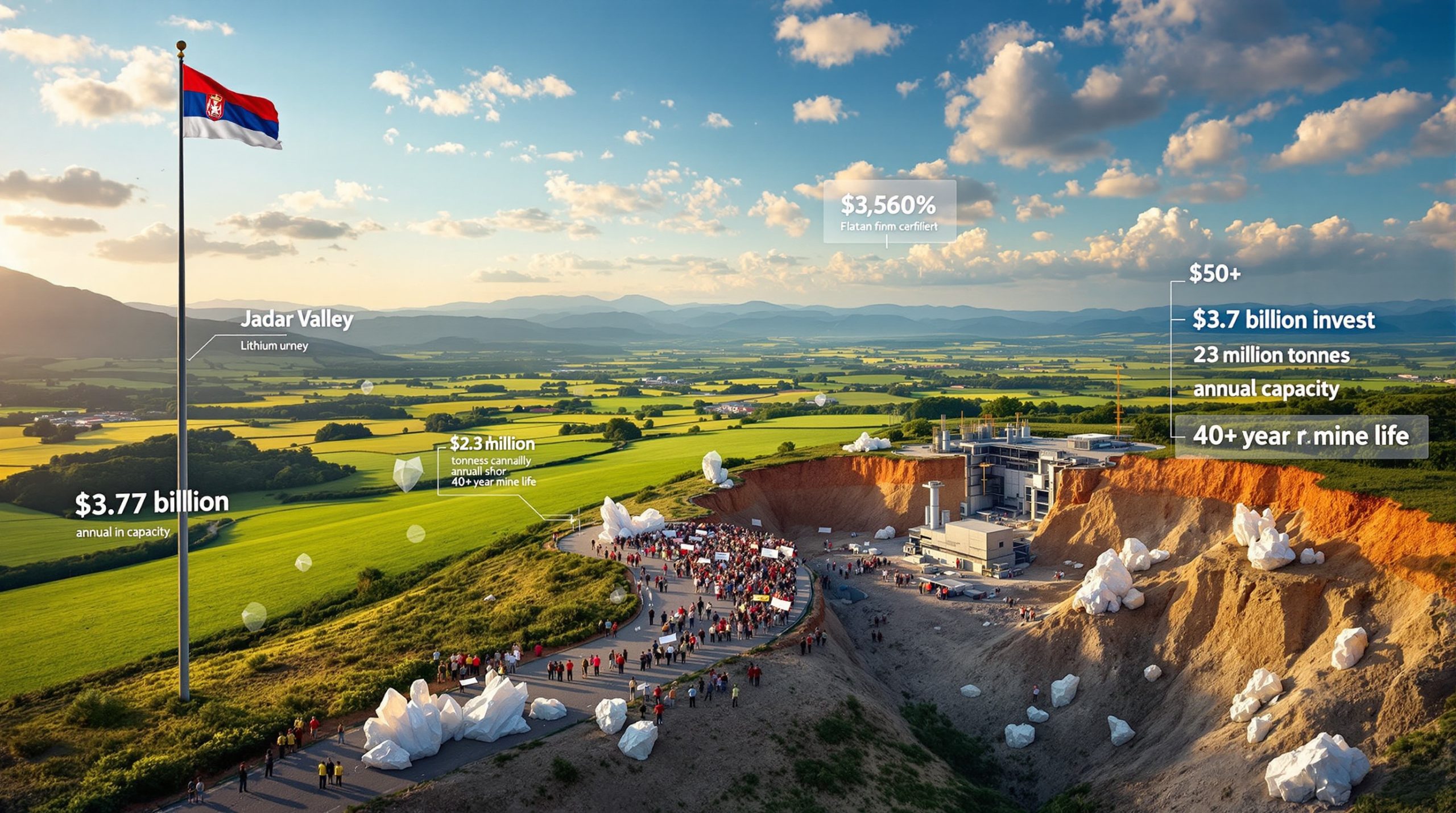What is GEOVIA Underground Designer?
GEOVIA Underground Designer is a specialized software solution that transforms traditional underground mine planning through parametric modeling technology. This innovative tool enables mining engineers to create, evaluate, and modify underground mine designs with unprecedented speed and flexibility. By leveraging aerospace-grade engineering principles, the software allows for dynamic, interconnected design elements that automatically update when changes are made to any part of the mine plan.
According to Christina Ludwicki, GEOVIA industry process expert at Dassault Systèmes, "Everything is connected. If I change the length of a heading or the position of a point, all the related infrastructure – stopes, drives, raises – update in real time." This interconnected approach represents a fundamental shift in how mining engineers conceptualize and develop underground mining innovations.
The software was officially released in July 2025, bringing proven aerospace design methodology to the mining sector through Dassault Systèmes' technology ecosystem.
Key Capabilities and Features
- Parametric modeling framework that connects all design elements mathematically
- Real-time updates across the entire mine design when changes are made to any component
- Visual scripting engine for customized automation workflows that streamline repetitive tasks
- Cloud-based collaboration through the 3DEXPERIENCE platform enabling global team access
- Compatibility with various mining methods including longhole stoping, block caving, cut-and-fill, room and pillar, and sublevel caving
The platform integrates CATIA technology—the same engineering software used to design complex aerospace projects like Boeing's 777 and 787 aircraft—applying this sophisticated modeling capability to the unique challenges of underground mining environments.
How Does Parametric Design Transform Underground Mining?
Traditional underground mine design has historically been a time-intensive process requiring manual updates across disconnected workflows. When changes occur—whether from new geological data, production targets, or geotechnical constraints—engineers often need to rebuild significant portions of their designs from scratch.
Ludwicki highlighted this industry-wide challenge, noting, "I come from underground mining and have spent months on a single design, only for it to be changed and thrown away." This experience reflects the frustration felt by many mining engineers working with conventional design tools.
The Evolution from Static to Dynamic Mine Planning
GEOVIA Underground Designer transforms this approach by implementing a parametric framework where:
- Design elements maintain mathematical relationships with one another, creating a network of interconnected components
- Changes to one component automatically propagate throughout the entire model, eliminating redundant work
- Engineers can focus on strategic decisions rather than repetitive drafting tasks, improving productivity
- Multiple design scenarios can be evaluated in parallel, enabling better risk assessment and optimization
This shift from static to dynamic planning fundamentally changes how mining engineers approach their work. Instead of treating each design element as an isolated component, the parametric approach recognizes the interdependencies between development drives, stopes, ventilation systems, and other infrastructure.
Time Efficiency Gains in Mine Planning
The parametric approach delivers substantial time savings compared to conventional methods. According to Ludwicki, the software "cuts weeks off design timelines" and allows engineers to "test 10, 20, even 30 design scenarios in the time it used to take for one."
This efficiency gain transforms the design process from a bottleneck into a strategic advantage, enabling mining companies to:
| Design Task | Traditional Approach | With Parametric Design | Key Benefit |
|---|---|---|---|
| Initial design creation | Weeks to months of manual drafting | Days to weeks with parametric templates | Faster project initiation |
| Design modifications | Manual redrafting of affected areas | Automatic propagation of changes | Immediate response to new information |
| Scenario evaluation | Limited by time constraints | Multiple scenarios evaluated simultaneously | Better decision-making |
| Design optimization | Iterative manual process | Systematic exploration of options | Superior final designs |
The ability to rapidly iterate designs means that engineers can explore more options and make better-informed decisions before committing to development plans that will ultimately cost millions to implement underground.
What Mining Problems Does Underground Designer Solve?
Underground mining operations face numerous challenges that impact productivity, safety, and profitability. GEOVIA Underground Designer addresses several critical issues that have traditionally hampered efficient mine planning and development.
Addressing Key Industry Challenges
How Does It Handle Design Flexibility?
Underground mining operations frequently encounter unexpected geological features, changing economic conditions, and evolving production requirements. GEOVIA Underground Designer addresses these challenges by:
- Enabling rapid redesign when new information becomes available, such as updated 3D geological modeling
- Preserving design intent while accommodating changes to key parameters like stope dimensions
- Providing tools to test multiple scenarios against various constraints, including geotechnical limitations
- Maintaining design coherence across complex underground infrastructures even when significant changes occur
Ludwicki emphasized this flexibility benefit, noting that "That flexibility enables better decisions based on real constraints like changing cut-off grades or unexpected geological structures." This adaptability is particularly valuable in underground mining where geological uncertainty is an inherent challenge.
Can It Improve Collaboration Between Teams?
The cloud-based platform facilitates:
- Real-time collaboration between geologists, engineers, and planners across different locations
- Consistent access to the latest design iteration for all stakeholders, eliminating version control issues
- Permission-based editing to maintain design integrity while enabling appropriate input from various teams
- Global accessibility for distributed teams, supporting modern work arrangements and multinational operations
The integration with the 3DEXPERIENCE platform allows mining companies to break down traditional silos between technical disciplines, creating a more cohesive approach to mine planning and development.
What Technologies Power GEOVIA Underground Designer?
The technological foundation of GEOVIA Underground Designer represents a significant transfer of proven engineering tools from aerospace to mining, bringing sophisticated design capabilities to underground operations.
The CATIA Connection: From Aerospace to Underground
GEOVIA Underground Designer leverages CATIA—Dassault Systèmes' advanced engineering design software that has been instrumental in developing complex aerospace projects like Boeing's 777 and 787 aircraft. As Ludwicki explains, "This is aerospace-grade technology being tailored for mining. If you can model a jet engine, you can model a stope."
This technology transfer brings:
- Proven parametric modeling capabilities from aerospace engineering, adapting precision design tools for mining
- Robust mathematical foundations for complex spatial relationships that accurately represent underground environments
- Sophisticated constraint management systems that ensure designs remain viable as changes are made
- Advanced visualization capabilities that improve understanding of complex underground layouts
The adaptation of aerospace design principles to mining represents a significant advancement in how underground operations are planned and developed.
The 3DEXPERIENCE Platform Integration
As part of Dassault Systèmes' broader ecosystem, Underground Designer benefits from integration with the 3DEXPERIENCE platform, providing:
- Seamless data flow between different mining disciplines, from geology to production planning
- Version control and design history tracking that maintains a clear record of design evolution
- Cloud-based accessibility and scalability that supports teams of any size and geographical distribution
- Comprehensive permission management to ensure appropriate access to design elements
This integration creates a collaborative environment where all stakeholders can work together effectively while maintaining data integrity and security.
How Does Implementation Work in Real Mining Operations?
While the technology offers significant advantages, implementing GEOVIA Underground Designer requires thoughtful planning and a transition period for mining teams.
Adoption Strategy and Learning Curve
While the technology represents a significant advancement, implementation requires:
- A mindset shift from traditional CAD-based workflows to parametric thinking about design relationships
- Understanding of input-output relationships in design elements to effectively utilize the parametric capabilities
- Training on the parametric modeling approach, though Ludwicki notes that "once users grasp the parametric logic – that everything's an input or output – it becomes intuitive"
- Customization of templates to match specific mining methods and operational requirements
Mining companies that invest in proper training and implementation support can accelerate the adoption process and maximize the benefits of the parametric design approach.
Case Study: Block Cave Mine Design
A recent implementation demonstrated the software's capabilities when applied to a complex block cave mining operation:
- Complete parametric model created in under two weeks, according to Ludwicki
- All design elements (rings, access points, infrastructure) maintained parametric relationships
- Design changes implemented in minutes rather than weeks, enabling rapid iteration
- Multiple production scenarios evaluated against various constraints to optimize the mine plan
Ludwicki highlighted the efficiency gains, noting, "It took under two weeks, and everything – every ring, every access point – was parametric and simulation-ready. In the past, that could've taken months."
What Makes Underground Designer Different from Traditional Mine Planning Software?
The shift from conventional CAD-based mine planning tools to a parametric design environment represents a fundamental change in how mining engineers approach their work.
Comparison with Conventional Approaches
| Feature | Traditional Mine Planning Software | GEOVIA Underground Designer |
|---|---|---|
| Design updates | Manual, time-consuming redrafting of affected areas | Automatic propagation of changes throughout the design |
| Design relationships | Static, disconnected elements requiring manual coordination | Dynamic, interconnected components with maintained relationships |
| Scenario testing | Limited by time constraints, often only one or two options explored | Multiple scenarios evaluated in parallel, enabling better decisions |
| Collaboration | File-based, version control issues common | Cloud-based, real-time updates accessible to all stakeholders |
| Customization | Limited scripting capabilities | Visual scripting engine for automation of repetitive tasks |
| Integration | Often standalone solutions with limited data exchange | Part of comprehensive mining ecosystem with seamless data flow |
Ludwicki emphasized this distinction, noting, "That's why I fell in love with this technology – it's fast, flexible and completely parametric. You change one element, and everything updates automatically. That's a game-changer."
The Virtual Twin Concept
GEOVIA Underground Designer lays the foundation for a comprehensive virtual twin of mining operations:
- Digital representation that evolves with the physical mine, maintaining a current and accurate model
- Ability to simulate operational changes before implementation, reducing risk and optimizing outcomes
- Integration of real-time data to keep the model current with actual underground conditions
- Platform for testing optimization strategies in a risk-free environment before committing resources
This virtual twin approach allows mining companies to make better-informed decisions and respond more effectively to changing conditions.
How Does Underground Designer Support Strategic Decision-Making?
Beyond the tactical advantages of faster design, GEOVIA Underground Designer enables better strategic planning and decision-making throughout the mine lifecycle.
Enabling Data-Driven Mine Planning
The software transforms the decision-making process by:
- Providing quantitative comparisons between design alternatives based on key performance indicators
- Enabling rapid assessment of economic implications for different development strategies
- Supporting risk analysis through multiple scenario testing to identify optimal approaches
- Facilitating optimization of development sequences to maximize net present value
Ludwicki highlights this strategic value, stating, "We're helping clients get from strategy to operation faster and more accurately. We can simulate, evaluate, and adapt before committing millions of dollars underground." This approach aligns perfectly with the growing emphasis on data-driven mining operations in the industry.
ESG Considerations and Sustainability
Modern mining operations face increasing pressure to improve sustainability metrics. Underground Designer supports these efforts by:
- Optimizing development to minimize environmental footprint and reduce waste rock production
- Reducing energy consumption through efficient mine layouts that minimize haulage distances
- Enhancing safety through better planning of escape routes and ventilation systems
- Supporting precision mining to reduce waste and water usage throughout operations
The ability to evaluate multiple design options quickly makes it easier for mining companies to identify approaches that balance economic performance with environmental and social responsibilities.
What Are the Implementation Requirements?
Successful implementation of GEOVIA Underground Designer requires appropriate infrastructure and organizational preparation.
Technical and Organizational Prerequisites
Successful implementation of GEOVIA Underground Designer requires:
- Computing infrastructure compatible with 3D modeling requirements and parametric calculations
- Network capabilities for cloud-based collaboration, though on-premises options are available
- Training program for engineering teams to build parametric design competencies
- Change management strategy for workflow transitions to minimize disruption
These requirements vary depending on the size and complexity of the mining operation, but planning for appropriate infrastructure and training is essential for successful adoption.
Integration with Existing Systems
The software is designed to work within broader mining technology ecosystems:
- Data exchange with geological modeling software to incorporate updated resource models
- Integration with production scheduling tools to optimize short and long-term planning
- Compatibility with ventilation and geotechnical analysis software for comprehensive design evaluation
- Connection to enterprise resource planning systems for budget and resource allocation
This integration capability ensures that the parametric design environment works seamlessly with other systems in the mining technology stack.
How Will Underground Mine Design Evolve?
The introduction of parametric design to underground mining represents the beginning of a broader digital transformation in the industry.
Future Developments and Roadmap
The parametric design approach represents the beginning of a broader transformation in underground mining:
- Increasing automation of routine design tasks, freeing engineers to focus on strategic decisions
- Integration of AI mining solutions for design optimization based on multiple constraints
- Enhanced simulation capabilities for operational forecasting and risk assessment
- Expanded integration with IoT and real-time monitoring systems to create true digital twins
As Ludwicki notes, "This is just the beginning. We've built the foundation. Now, it's about seeing how the mining industry takes it forward."
Industry Adoption Trends
While still in early deployment, the technology is positioned to become an industry standard as:
- Mining companies seek competitive advantages through digital transformation initiatives
- Engineers demand more efficient tools to address increasingly complex operational challenges
- Operations require greater agility in responding to market changes and production pressures
- ESG considerations drive more precise and optimized mine designs to minimize environmental impact
The mining industry's growing embrace of digital technologies suggests that parametric design tools like GEOVIA Underground Designer will play an increasingly important role in future industry evolution trends.
FAQ: Common Questions About GEOVIA Underground Designer
How does the learning curve compare to traditional mining software?
While there is an initial learning curve associated with parametric thinking, most engineers become proficient within 2-4 weeks of training and practical application. The software includes templates and wizards to accelerate the transition. As Ludwicki points out, once users understand the parametric logic, the interface becomes intuitive and productivity increases rapidly.
Can existing mine designs be imported into the system?
Yes, the software supports importing conventional CAD designs, though maximum benefit comes from rebuilding designs parametrically to enable full flexibility. The import capability allows for a gradual transition as teams become more familiar with the parametric approach.
What mining methods are supported?
The software supports all major underground mining methods including longhole stoping, block caving, cut-and-fill, room and pillar, and sublevel caving through customizable templates. These templates provide starting points that can be modified to match specific operational requirements.
How does it handle complex geological constraints?
Geological structures can be imported from standard modeling software and used as constraints within the parametric mine design environment, ensuring development avoids problematic zones. This integration allows engineers to respond quickly when new geological information becomes available.
Is cloud deployment mandatory or can it be installed on-premises?
While cloud deployment offers maximum collaboration benefits, on-premises installation options are available for operations with connectivity limitations or specific security requirements. This flexibility allows mining companies to implement the solution in a way that matches their IT infrastructure and security policies.
Ready to Gain an Edge in Mining Investment Opportunities?
Stay ahead of the market with Discovery Alert's proprietary Discovery IQ model, delivering instant notifications when significant mineral discoveries are announced on the ASX. Visit our discoveries page to explore historic examples of how major mineral discoveries have generated exceptional returns for early investors.




